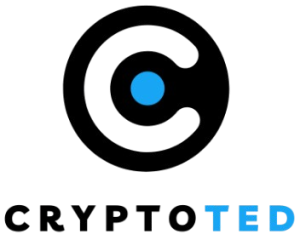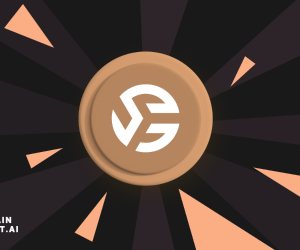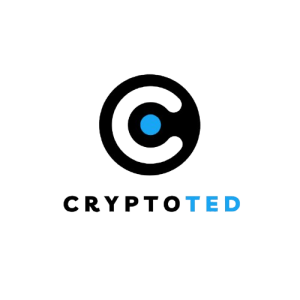Web3 is here to offer a decentralized future. However, the mass adoption of Web3 is significantly bottlenecked by user experience. From a DeFi swap to token approvals, all these interactions require an understanding of seed phrases, gas fees, and transaction signing. Besides, using blockchain applications can also feel challenging. This is where account abstraction in Web3 comes to the rescue.
This is a significant innovation that has simplified blockchain interactions, enabling programmable wallets and gasless transactions. In this blog, we will explore what account abstraction is in Web3, its importance, and how it works. Besides, you will also get to know how it is changing the future of decentralized identity and finance.
What Is Abstraction in Crypto?
To get a better understanding of account abstraction, it is important to know about the two common types of accounts that exist in Ethereum. These are:
- Smart Contract Accounts: These are generally controlled by smart contract codes and hold assets. However, to carry out an action, it requires an EOA or Externally Owned Account.
- EOA: It is a common type of crypto wallet people use. These accounts can be controlled by using a private key. For every transaction, users need to pay for gas fees. These are simple to use but inflexible. If users lose their private key, they may not be able to access their account forever.
The issue is that EOAs are the primary entry point and force users to have ETH for gas fees. Besides, they don’t offer many options for sophisticated security.
Account abstraction in Web3 replaces those accounts with Smart Contract Wallets. An account abstraction wallet can support multi-factor authentication, social recovery, payment automation, and more. Users can set custom rules for transaction validation as well as execution.
Account Abstraction in Ethereum
Ethereum’s journey to implement account abstraction started with ERC-4337. It introduced a new infrastructure without changing the core protocol. It enables smart contract wallets to function like EAOs while providing users with advanced features such as batched transactions and gas sponsorship.
Multiple projects are now developing tools to support use cases on account abstraction on Ethereum. These platforms offer developers bundler services, paymaster integration, and APIs to make the implementation process simple and quick.
Account Abstraction- The Process
Account abstraction in Web3 has introduced a unified account model. Here, a smart contract functions as a wallet. These wallets can be easily programmed to act like EOAs, but provide users with advanced features.
Some major components of account abstraction are:
- Smart Contract Wallets: The primary element of account abstraction. Using an account abstraction wallet, users can define custom rules.
- UserOperation: Introduced through the ERC-4337 proposal, a UserOperation is a flexible transaction format, and smart wallets can use it to communicate with the blockchain.
- Bundlers: These are Ethereum nodes. They collect multiple UserOperations and then submit those transactions to the blockchain in a single batch. This significantly lowers gas costs and boosts efficiency.
- EntryPoint: It verifies every instruction and forwards it to a smart account to carry out UserOperations.
- Paymasters: They pay gas fees on behalf of users. It facilitates gas-free transactions for users and also offers flexible payment options. Payments can be made using ERC-20 tokens.
This sophisticated architecture enables users to use dApps without worrying about maintaining sufficient ETH for gas fees.
Curious about the Ethereum Technology ? Enroll now in The Complete Ethereum Technology Course
Benefits of Account Abstraction in Web3
By eliminating technical constraints and fees, account abstraction offers a lot of advantages, making Web3 more scalable and accessible. Here are some key benefits that make it a crucial element of the modern crypto ecosystem.
1. Gasless Crypto Transactions
An exciting feature of account abstraction is the elimination of gas fees. It allows dApps or paymasters to pay gas fees, not users. This means:
- Users don’t have to store ETH to use a dApp
- New users can start using crypto immediately, which is beneficial for users who are unfamiliar with cryptocurrencies.
- Fees can be paid in ERC-20 tokens, stablecoins, or off-chain payment options.
With all these facilities, there will be fewer onboarding obstacles, less friction, and a seamless user experience.
2. Improved Wallet Security
Instead of depending on a private key, smart wallets can deploy custom security measures like multi-signature verification, time locks, hardware keys, threshold signatures, biometrics, and spending limits. Besides, if users lose access to their wallets, they will be able to recover them using social recovery methods.
3. Enhanced User Experience
With the ability to automate repetitive payments, process multiple transactions in a single batch, and recover wallets through social recovery, users will enjoy a smooth experience. Besides, they will get complete control over their assets and data.
4. Cross-Chain Compatibility
While account abstraction primarily focuses on Ethereum, it is being adopted by multiple Layer 2 networks. For example, Linea, Starknet, and zkSync. Some non-EVM chains have also started using it. This ensures broader ecosystem support and scalability.
5. Flexibility and Customization
Teams, DAOs, and businesses can create wallets with tailored controls such as conditional multi-sig logic, daily spend limits, withdrawal approval, enforce compliance, and more. This creates more possibilities for trust funds, treasuries, etc.
Ecosystem Growth and Adoption Trends
Major Web3 projects are now deploying account abstraction technologies, including NFT marketplaces, DeFi platforms, identity solutions, and gaming protocols. This massive adoption is driven by the need for robust security, better UX, as well as scalable infrastructure.
Besides, multiple Layer 2 networks, such as Arbitrum and Straknet, have integrated it, understanding its capability to trigger mass adoption. These networks provide users with faster transactions, reduced gas fees, and smart wallets with built-in support.
Furthermore, various crypto wallet providers such as Safe, Argent, and Ambire are also introducing an account abstraction feature, as it improves user onboarding as well as retention. These wallets offer gasless transaction crypto and social recovery.
Accelerate your crypto career with the world’s only accredited Cryptocurrency Certification, and master the skills that set you apart in the fast-evolving digital asset landscape.
The Future of Web3 Crypto Wallets
It can be said that account abstraction in Web3 is a significant shift. By enabling customizable security, gasless transactions, as well as an intuitive user interface, it has brought Web3 crypto wallets to massive mainstream adoption. Well, in the future, we may expect to witness:
- Hassle-free Onboarding: Users will be able to create an account and sign up using their device’s biometric feature and email, without worrying about gas fees and seed phrases.
- Universal Smart Wallets: User accounts will become programmable smart contracts, designed to meet users’ needs.
- Integration of AI: Smart wallets will use AI to identify fraud, automate decisions, and optimize gas usage.
- Signature Abstraction: It introduces different authentication methods, like hardware-based and biometric authentication. The purpose is to offer hassle-free DeFi integration.
- Interoperable Identity: Crypto wallets will store verifiable credentials, facilitating decentralized identity on multiple platforms.
- Network Abstraction: It enables seamless interaction between cryptocurrencies and blockchains, leading to enhanced accessibility and liquidity.
As Web3 penetrates into the digital landscape, account abstraction will play a major role in its scalability, security, as well as usability. Users and businesses who can embrace this change will thrive in the decentralized future.
Account Abstraction- Transforming Blockchain Interaction
Account abstraction in Web3 is unlocking a new phase of secure, scalable, and user-friendly blockchain transactions. Offering user-centric, programmable, and secure wallets, it simplifies the user onboarding process, making their engagement with blockchain and crypto seamless. Furthermore, it removes gas fees and complexities of keys and introduces automatic logic and social recovery.
For businesses and developers, understanding and leveraging account abstraction Ethereum will help them to stay ahead. After all, it has the power to create a new era of functionality and accessibility in this changing digital world.
*Disclaimer: The article should not be taken as, and is not intended to provide any investment advice. Claims made in this article do not constitute investment advice and should not be taken as such. 101 Blockchains shall not be responsible for any loss sustained by any person who relies on this article. Do your own research!.













